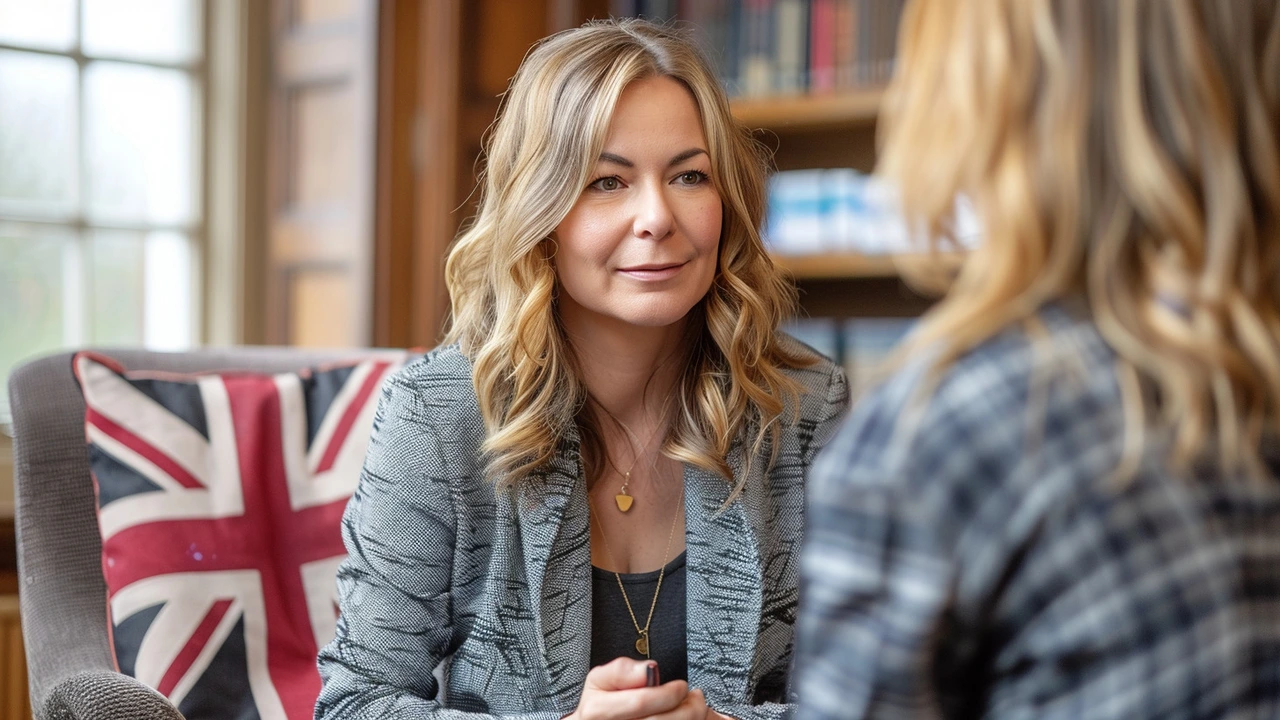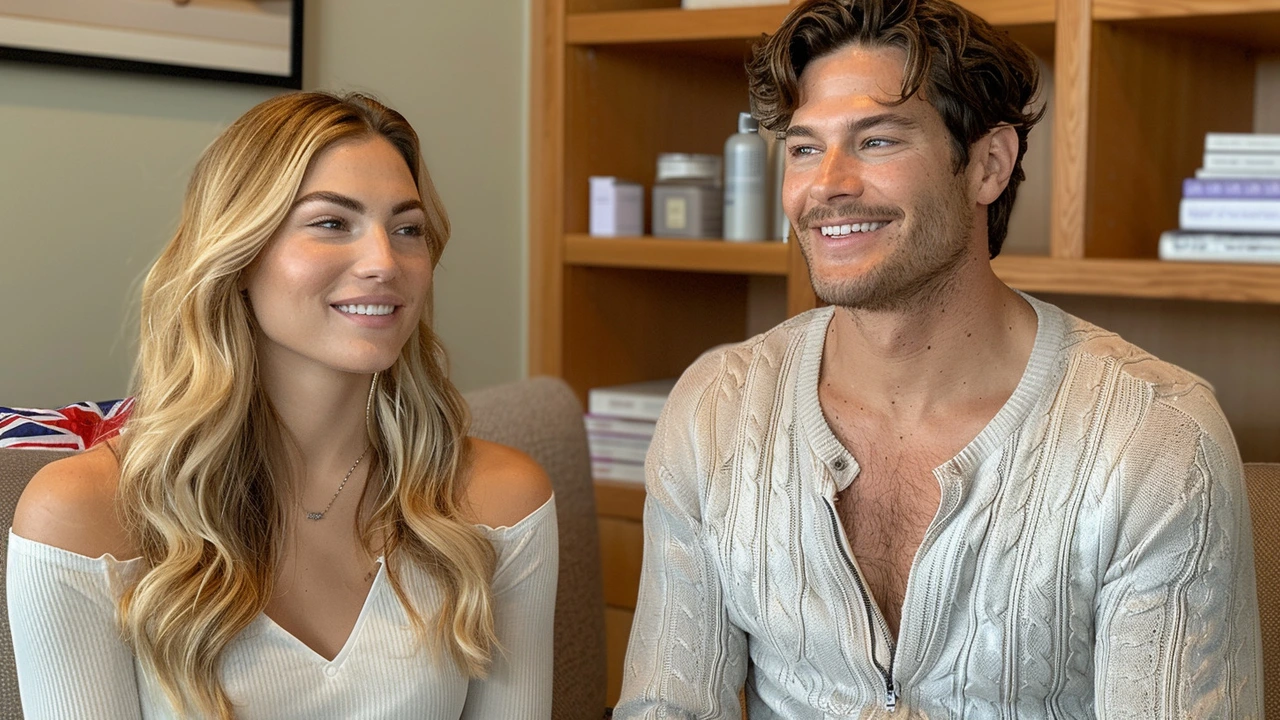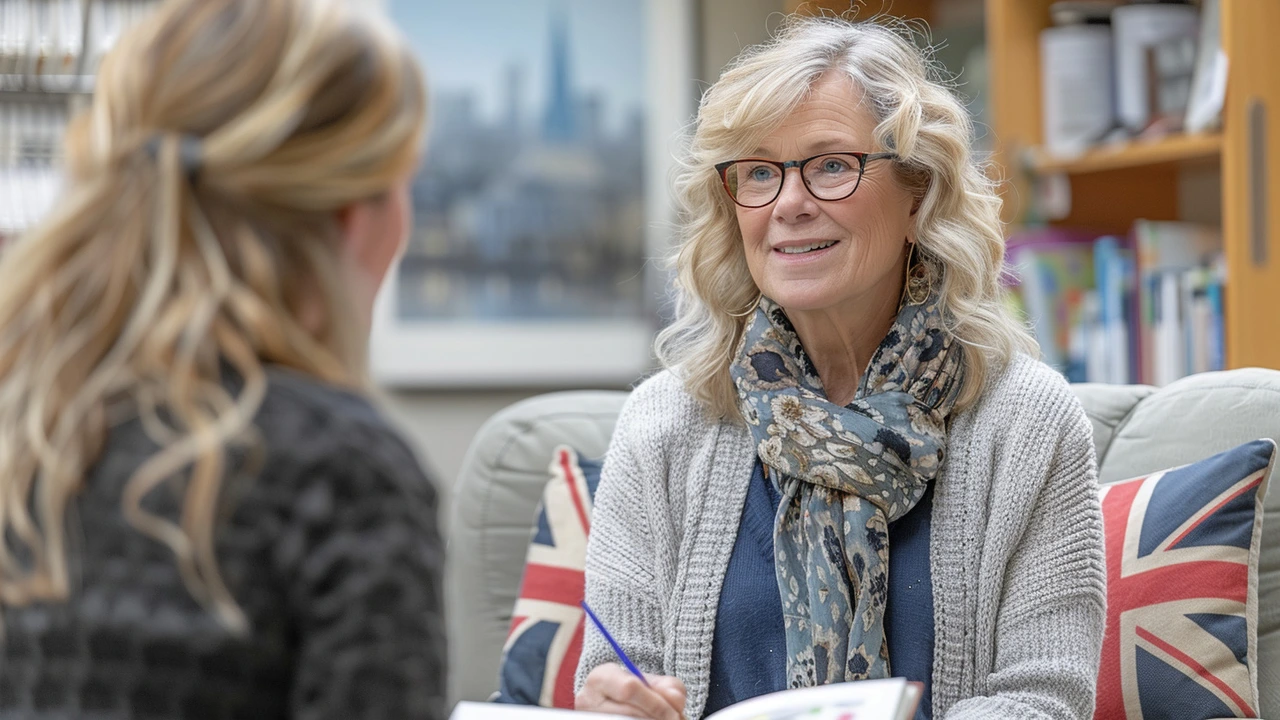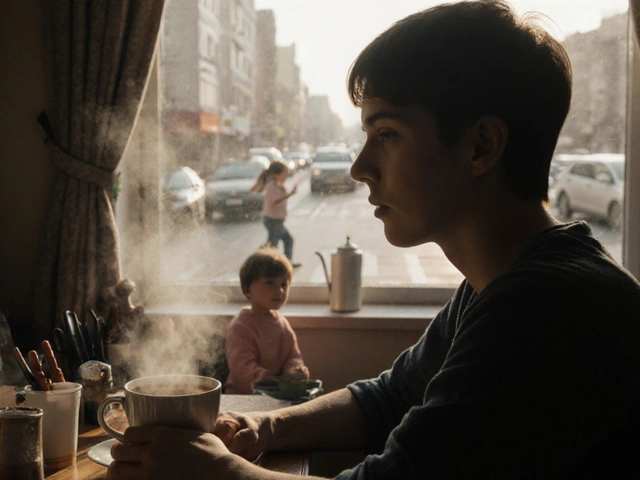Are you thinking about creative arts therapy but don't know where to start? Finding the right therapist can feel like looking for a needle in a haystack. It is an important decision for your mental well-being, so let's break down how you can make the best choice.
Creative arts therapy offers a unique approach to healing, blending artistic expression with traditional therapeutic techniques. By tapping into your creativity, you can uncover deeper emotional insights and cultivate a more fulfilling life.
Before diving in, take some time to understand what creative arts therapy is all about, and figure out your own needs and goals. Are you drawn to a specific type of art, like painting or music? Do you need a therapist with experience in a particular issue? Your answers will guide your search.
Next, look into the qualifications and backgrounds of potential therapists. Check their certifications, specializations, and reviews from other clients. Once you've shortlisted some candidates, set up initial consultations to see if their approach and personality match what you're looking for.
Finally, be prepared to invest in your therapy sessions. Make sure you're comfortable and open with your therapist, and don't hesitate to share your feelings and thoughts. It's a collaborative journey towards your mental well-being.
- Understanding Creative Arts Therapy
- Identifying Your Needs and Preferences
- Researching Qualified Therapists
- Evaluating Your Potential Therapist
- Making the Most of Your Therapy Sessions
Understanding Creative Arts Therapy
Creative arts therapy is a therapeutic approach that uses various forms of art to help individuals express themselves and work through emotional challenges. This type of therapy can include visual arts, music, dance, drama, and writing. Each form offers a unique way to explore and communicate feelings that might be difficult to articulate with words alone. Through the creative process, individuals can gain insights into their emotions, develop coping strategies, and find relief from stress.
One of the core principles of creative arts therapy is that the process of creating art can be healing in itself. Engaging in artistic activities can serve as a form of emotional release, allowing individuals to express pent-up emotions in a safe and constructive way. This can be especially helpful for those who have experienced trauma or have difficulty verbalizing their feelings.
Creative arts therapists are trained professionals who use their understanding of both psychology and the arts to guide their clients through the therapeutic process. They may have backgrounds in fields such as art therapy, music therapy, or drama therapy, and are often required to complete specialized training and certification. According to the American Art Therapy Association, "Art therapy is an integrative mental health profession that combines knowledge and understanding of human development and psychology, with the use of visual arts in treatment."
"The arts are an essential part of the human experience and can facilitate profound personal growth and resilience." — American Art Therapy Association
In creative arts therapy, the focus is not on the quality of the artwork produced but on the experience of creating it and the insights gained through the process. This means that anyone, regardless of their artistic skill level, can benefit from this type of therapy. Whether you are painting, sculpting, playing an instrument, or acting out a scene, the act of creation can help you access and understand deeper parts of yourself.
Studies have shown that creative arts therapy can be effective in treating a wide range of mental health issues, including anxiety, depression, PTSD, and substance abuse. For example, a study published in the Journal of the American Art Therapy Association found that art therapy significantly reduced symptoms of anxiety and depression in participants. Another study in the Journal of Music Therapy reported that music therapy improved emotional well-being and social functioning in individuals with mental health disorders.
Creative arts therapy can also be beneficial for children and adolescents, providing them with a non-verbal outlet to express their emotions and experiences. This can be particularly valuable for young people who may not have the language skills to communicate their feelings effectively. Through creative arts therapy, they can build self-esteem, improve social skills, and work through behavioral issues in a supportive environment.
By understanding the principles and benefits of creative arts therapy, you can better appreciate how this approach can support your mental health journey. Whether you choose to engage in art, music, drama, or another form of creative expression, the goal is to facilitate personal growth and emotional healing through the power of the arts.
Identifying Your Needs and Preferences
Before you embark on your journey with a creative arts therapist, it is essential to take a step back and think about what you are looking to achieve. Creative arts therapy is a broad field encompassing various forms of artistic expression, such as music, dance, drama, and visual arts. Identifying your personal preferences and therapeutic needs can significantly streamline the process of finding the right therapist for you.
Start by asking yourself what type of artistic expression resonates most with you. Are you someone who finds solace in the strokes of a paintbrush, or do you feel a profound connection through the rhythm of a drum? This simple inquiry can narrow down your options considerably. For instance, if you are particularly moved by music, you might lean towards a music therapist who integrates musical elements into the therapeutic process.
Understanding your specific mental health needs is equally important. Different therapists specialize in various areas such as anxiety, depression, trauma, and more. If you are dealing with post-traumatic stress disorder (PTSD), you might want to seek out a therapist who has experience and training in trauma-informed care. According to the American Art Therapy Association, “art therapy is practiced by trained professionals who hold a master’s degree or higher in art therapy or a related field.” Considering such qualifications can be vital in ensuring you receive the appropriate care.
Another significant aspect to consider is the therapeutic environment you feel most comfortable in. Think about whether you prefer individual therapy sessions or if you might benefit more from a group setting where you can share and engage with others facing similar challenges. It's essential to weigh the pros and cons of each setup. For example, group therapy can offer a sense of community and support, while individual therapy can provide more personalized attention and focus.
Open communication with your potential therapist is key. During initial consultations, discuss your goals and see how the therapist plans to help you achieve them. Ask about their approach, techniques, and any prior experience in dealing with your specific issues. Don’t hesitate to voice your preferences and concerns. A good therapist will be open to discussing how they can tailor their methods to suit your needs and help you feel comfortable.
Financial considerations are also an essential part of the equation. Therapy can be expensive, and it’s important to understand the costs involved. Some therapists might offer sliding scale fees, payment plans, or accept insurance. Make sure to discuss these aspects upfront to avoid any surprises later on. Knowing the financial side of things can help you make a more informed decision.
Lastly, trust your instincts. Sometimes, it all boils down to how you feel about a particular therapist. Do you feel understood and safe? Is there a sense of trust and rapport? The relationship you build with your therapist plays a vital role in the overall effectiveness of the therapy. Remember, it's okay to take your time to find the right match.

Researching Qualified Therapists
When it comes to finding a creative arts therapist, the research process is crucial. You want to ensure that the individual you choose is not only experienced but also a perfect match for your unique therapeutic needs. One of the first things you should do is check the therapist's credentials. Look for a certificated or licensed professional from recognized bodies like the American Art Therapy Association (AATA) or the International Expressive Arts Therapy Association (IEATA). These organizations maintain high standards and require rigorous training and supervision.
Spend some time going through the therapist’s online presence. Their websites, blogs, and social media profiles can offer insights into their approach, specialties, and personality. Many therapists also post client testimonials and case studies that can give you a sense of their success stories. Don't just rely on the information they provide, though. Look up reviews on third-party websites or forums. Honest feedback from former clients can be invaluable.
Specialization is another key factor. If you have a particular issue you need help with, such as trauma or anxiety, search for therapists who have specific experience in these areas. For instance, someone trained in drama therapy might be particularly helpful if you find verbal expression challenging. Finding a therapist who * speaks your language* both literally and figuratively can greatly enhance the effectiveness of the therapy.
The consultation stage can make or break your decision. Many therapists offer a free initial meeting or phone call, so you can get a feel for their style and approach. During these consultations, ask about their methodology, session structure, and what you can expect over time. Keep an eye on how you feel during this interaction. Do you feel heard? Respected? Comfortable? These initial feelings are often good indicators of future sessions.
Word of mouth remains one of the best ways to find a reliable therapist. Don’t hesitate to ask friends, family, or even other healthcare providers for recommendations. Referrals can often provide a layer of trust and security that online reviews can't match. Here’s a snippet from an experienced therapist:
“Choosing a therapist who matches your needs and personality can significantly impact the outcome of your therapy. It's a relationship, after all, and it should be grounded in trust and mutual respect.”
Availability and Cost
Last but not least, practical considerations like availability and cost should not be overlooked. Most therapists have busy schedules, so finding one who can accommodate your timing is essential. Also, ensure that their fees align with your budget. Some therapists work on a sliding scale or accept insurance, which can be a significant relief financially. According to a 2022 survey, the average cost for art therapy sessions ranges between $80 and $150 per hour. However, prices may vary depending on location and the therapist's experience level.
In your quest to find the right creative arts therapist, thorough research, patience, and intuition are your best allies. Take your time, ask questions, and trust your instincts. The effort you invest in this process will pay off in a transformative and enriching therapeutic journey.
Evaluating Your Potential Therapist
When you’re ready to choose a creative arts therapist, it's vital to conduct a thorough evaluation of your potential candidates. This step ensures that you’ll work with someone who not only understands your needs but also provides a safe and nurturing environment for healing. Start by examining their qualifications and professional background. Most reputable therapists hold certifications from recognized institutions. Check if they have credentials like a Registered Art Therapist (ATR) or credentials from the American Art Therapy Association (AATA). These certifications indicate that they have undergone extensive training and adhere to the ethical standards of the profession.
Another critical factor is their experience. A therapist who has worked with clients with similar issues to yours will likely offer better insights and support. Ask about the types of clients they typically work with and any specific areas of expertise. Their track record with issues like trauma, anxiety, depression, or personal development can provide a glimpse into their capabilities. Additionally, a therapist should have considerable experience in the particular art form you are interested in, whether it's visual arts, music, dance, or drama.
It's crucial to meet with potential therapists for an initial consultation, either in person or virtually. This meeting allows you to gauge whether their therapeutic style aligns with your expectations. Pay close attention to how they communicate. Do they listen actively? Are they empathetic and non-judgmental? Remember, your sessions will involve delving into personal and sometimes uncomfortable topics, so a supportive and understanding presence is necessary. Observe how comfortable you feel discussing your concerns with them.
"The therapeutic relationship is one of the most significant predictors of successful outcomes," notes Dr. Judith Herman, a renowned psychologist. "Trust and a sense of safety are foundational to effective therapy."
Another point to consider is their availability and location. It would help if you worked with someone whose schedule aligns with yours. If you find it challenging to travel, look for therapists offering virtual sessions. Consistency is key to progress in therapy, so ensure that you can commit to regular sessions without significant disruptions. Cost is another factor that can’t be ignored. Inquire about their fees, payment plans, and if they accept insurance. Some therapists offer sliding-scale payments based on your financial situation, making therapy accessible to a broader audience.
Lastly, pay attention to the therapist’s approach to therapy. Some therapists might emphasize a client-centered approach, where you guide the session's direction, while others may have a more structured plan. There's no right or wrong way; the goal is to find someone whose methodology resonates with you. A therapist with a flexible approach can tailor the sessions based on your evolving needs, which can be beneficial in the long run.

Making the Most of Your Therapy Sessions
To maximize the benefits of your creative arts therapy sessions, it’s crucial to adopt a proactive and engaged approach. Begin by setting clear and achievable goals with your therapist. Whether it’s managing stress, improving self-esteem, or processing past traumas, knowing what you want to achieve will give your sessions direction and purpose.
One of the most important aspects is being open and honest about your feelings and thoughts. This may sound simple, but it's often easier said than done. The therapeutic space is a safe zone where judgment is left at the door. Sharing your innermost emotions can feel like a weight lifted off your shoulders. Remember, your therapist is there to help you navigate through these feelings, not to judge them.
A study from The Journal of Psychological Arts reported that individuals who actively participated and shared openly in their sessions saw a 35% improvement in emotional well-being compared to those who were more reserved. This highlights just how vital open communication can be to your progress.
Engage actively in the artistic processes. Whether you're painting, drawing, writing, or engaging in music or dance, throw yourself into the creative activities. The art you're creating isn't about winning any awards; it's a physical manifestation of your emotional journey. Often, the most profound insights come when you're fully immersed in creating.
Also, reflect on your sessions outside of the therapy room. Take notes on what you felt was particularly impactful and any breakthroughs you experienced. Keeping a journal can be a great way to track your progress, process your emotions, and notice patterns that may emerge over time. Those documented reflections can form the basis for more productive discussions in future sessions.
Maintain consistency with your appointments and practice patience. Long-lasting change doesn't happen overnight. Commit to regular sessions and trust the process. It’s entirely normal to experience fluctuating emotions; some sessions might feel incredibly enlightening, while others may seem like an uphill battle.
Don’t hesitate to provide feedback to your therapist. Your sessions are tailored for your benefit, and your therapist is there to support you. If certain activities don’t resonate with you or you have suggestions for something different, communicate that. Effective therapy is a collaborative effort.
In one of her influential works, art therapist Cathy Malchiodi emphasizes,
“Therapy is about discovering and creating possibility. It’s a journey best taken with openness and collaboration.”This statement underscores the idea that your active participation and willingness to engage can significantly enhance the effectiveness of your therapy.
Lastly, take care of yourself outside the therapy sessions. Proper self-care, including adequate sleep, a balanced diet, and regular physical activity, can greatly complement your therapeutic work. Your overall well-being contributes to your healing journey and helps you come to sessions prepared and energized.






